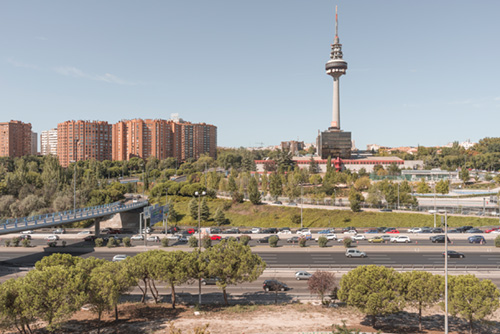
Madrid M30
In 2017 Giovanni Hänninen was called by Giovanna Calvenzi of Studio Basilico to continue Gabriele Basilico’s work on the three European cities with a circular structure: Moscow, Milan, Madrid.

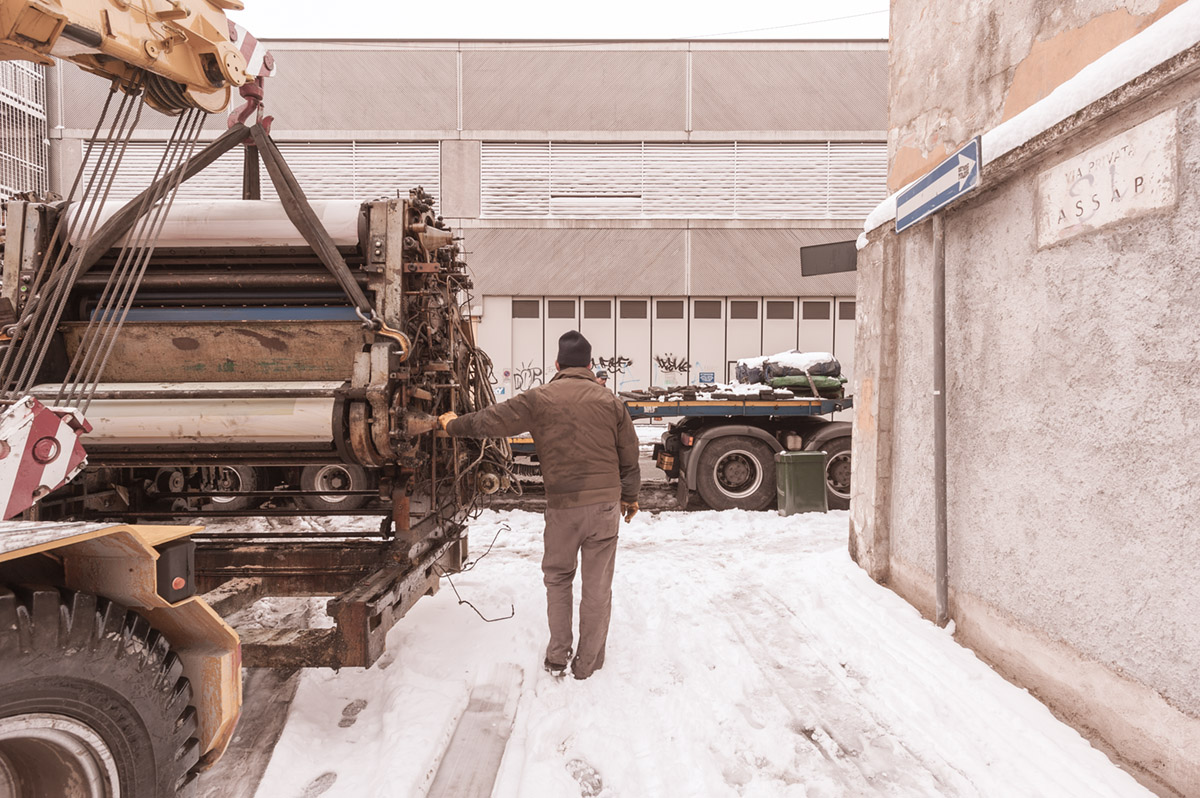
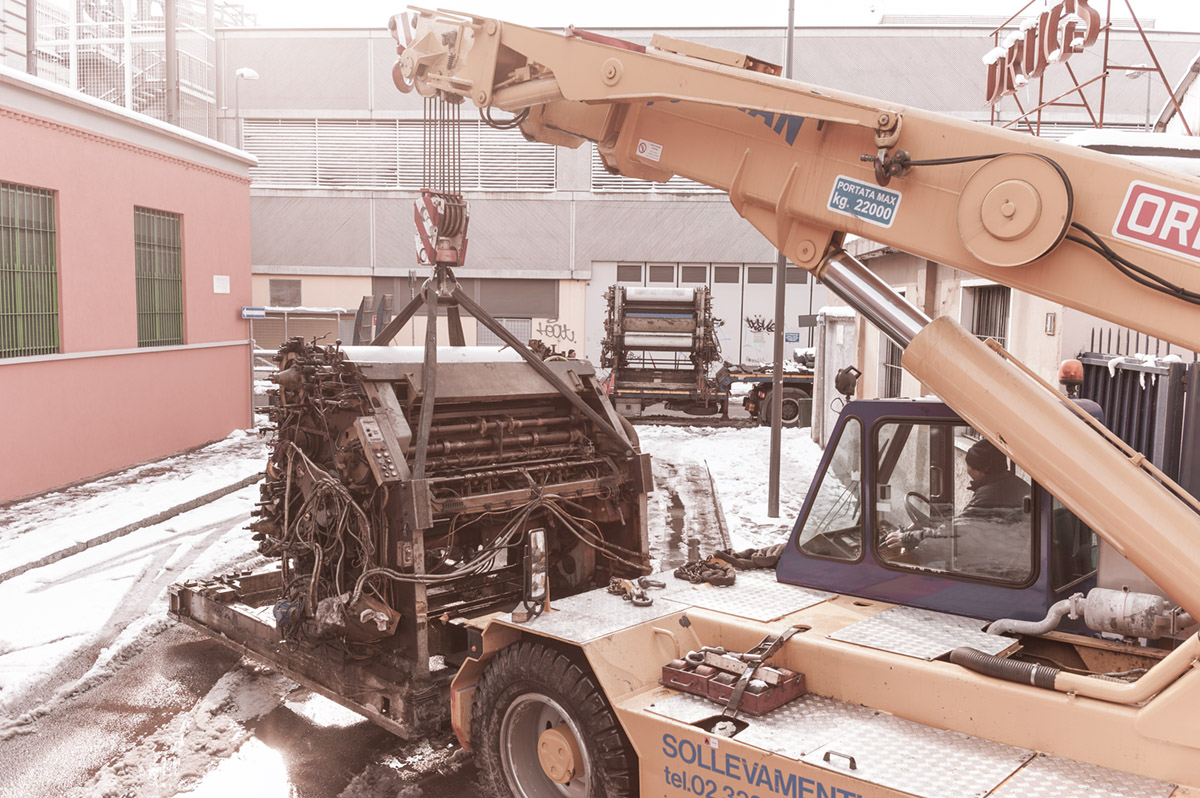
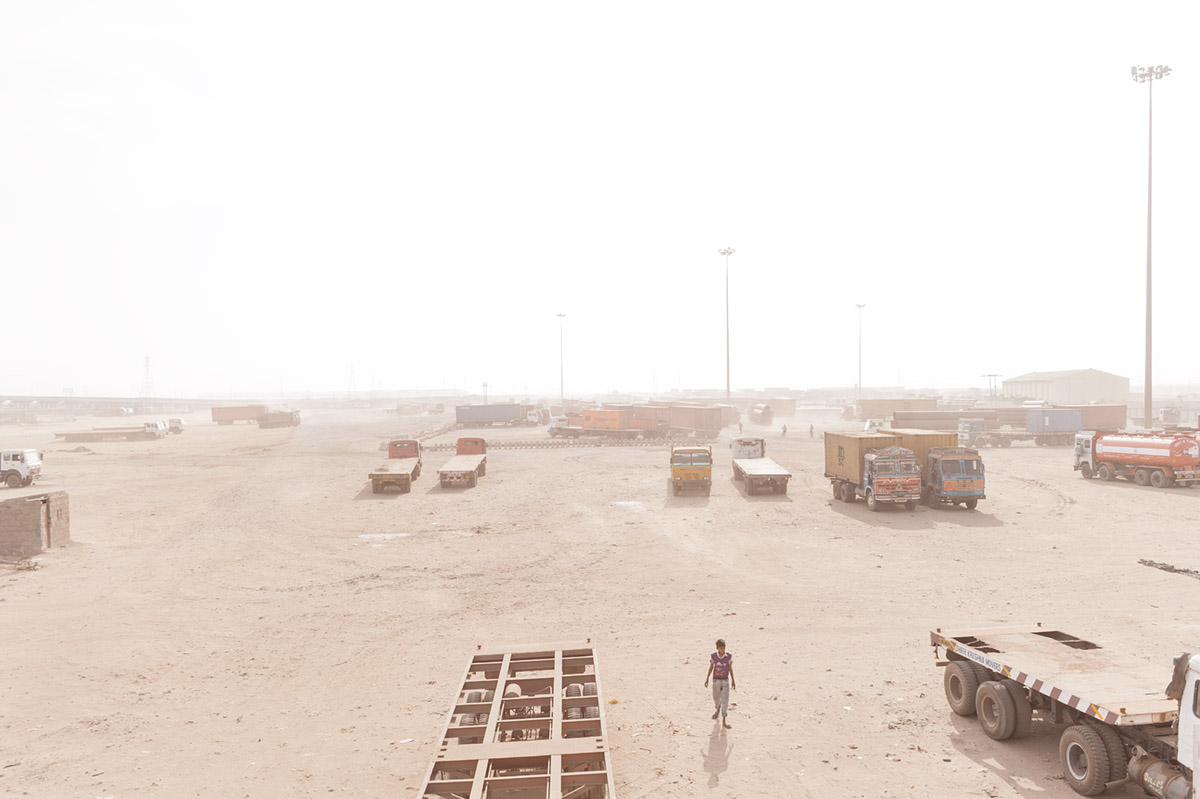
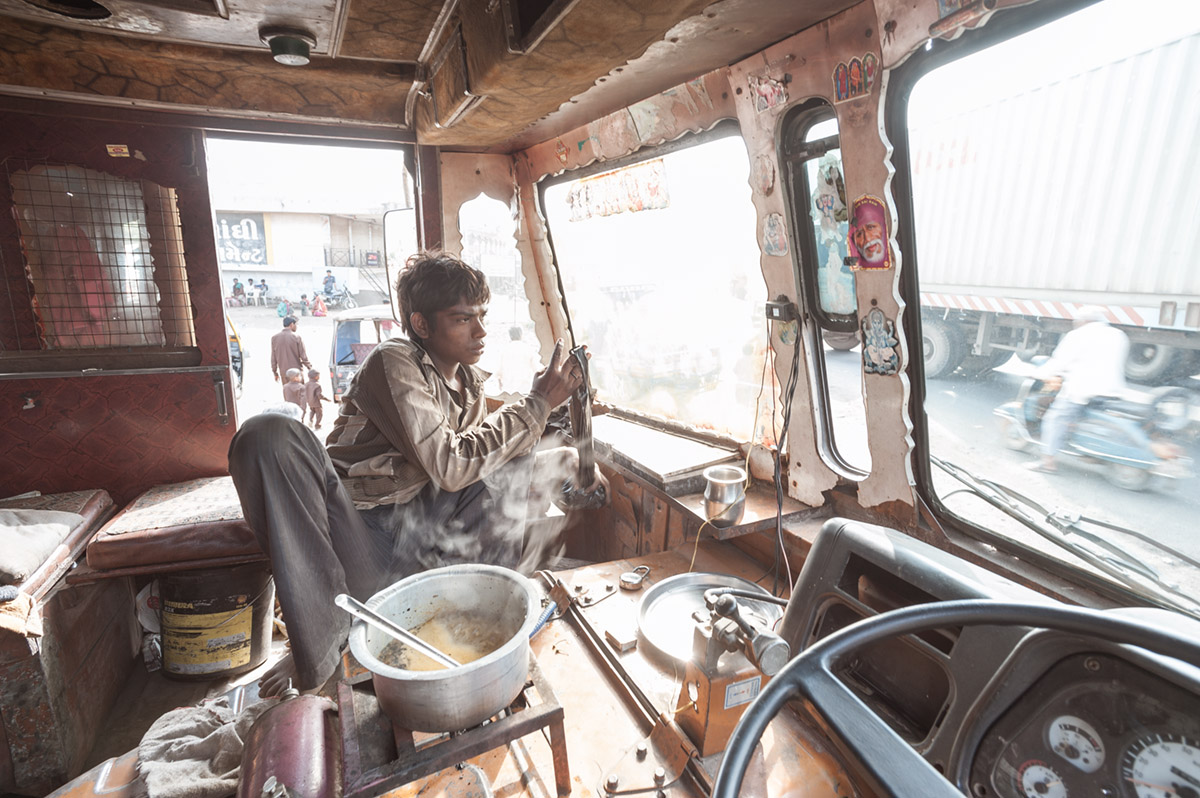
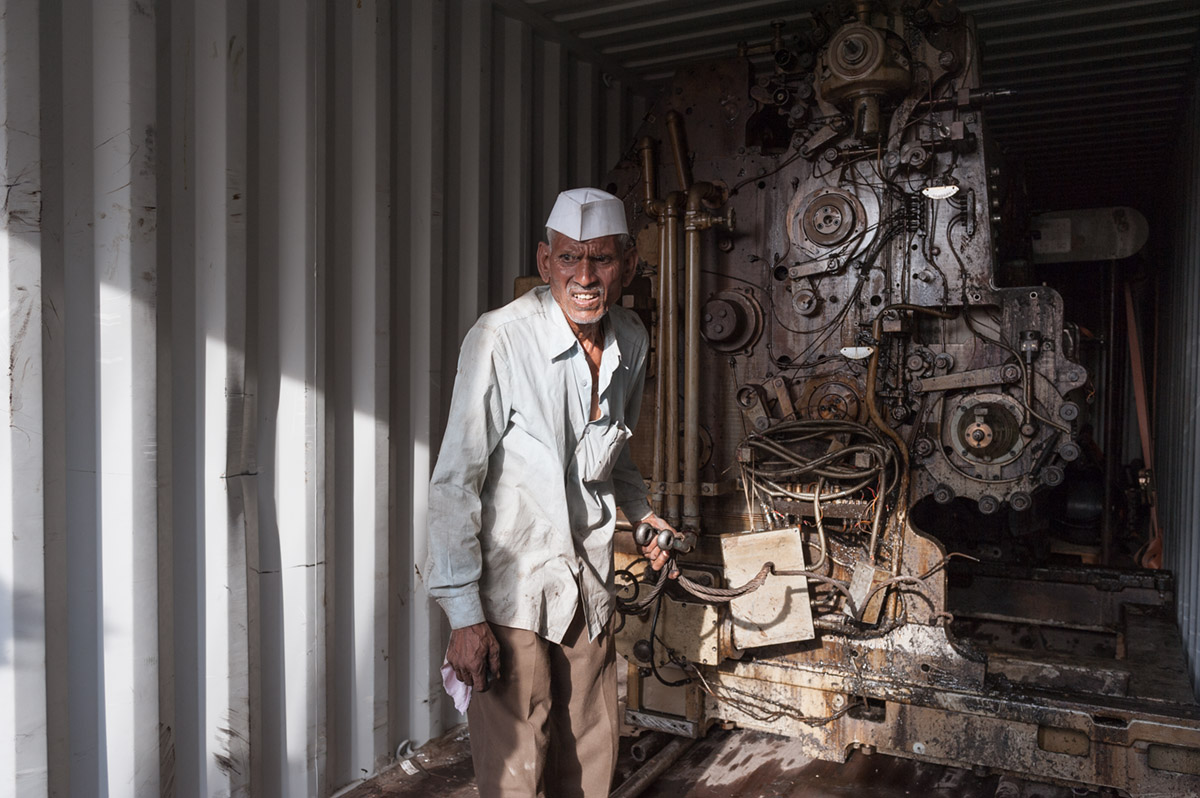

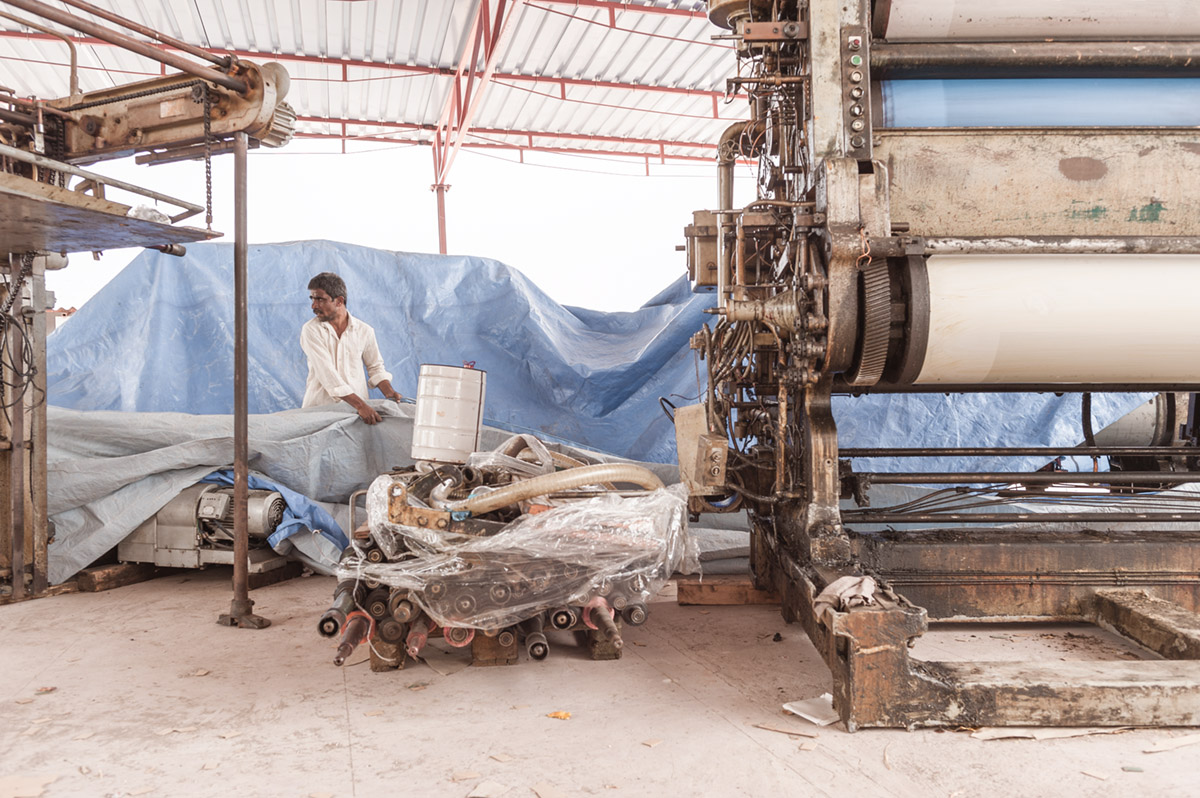
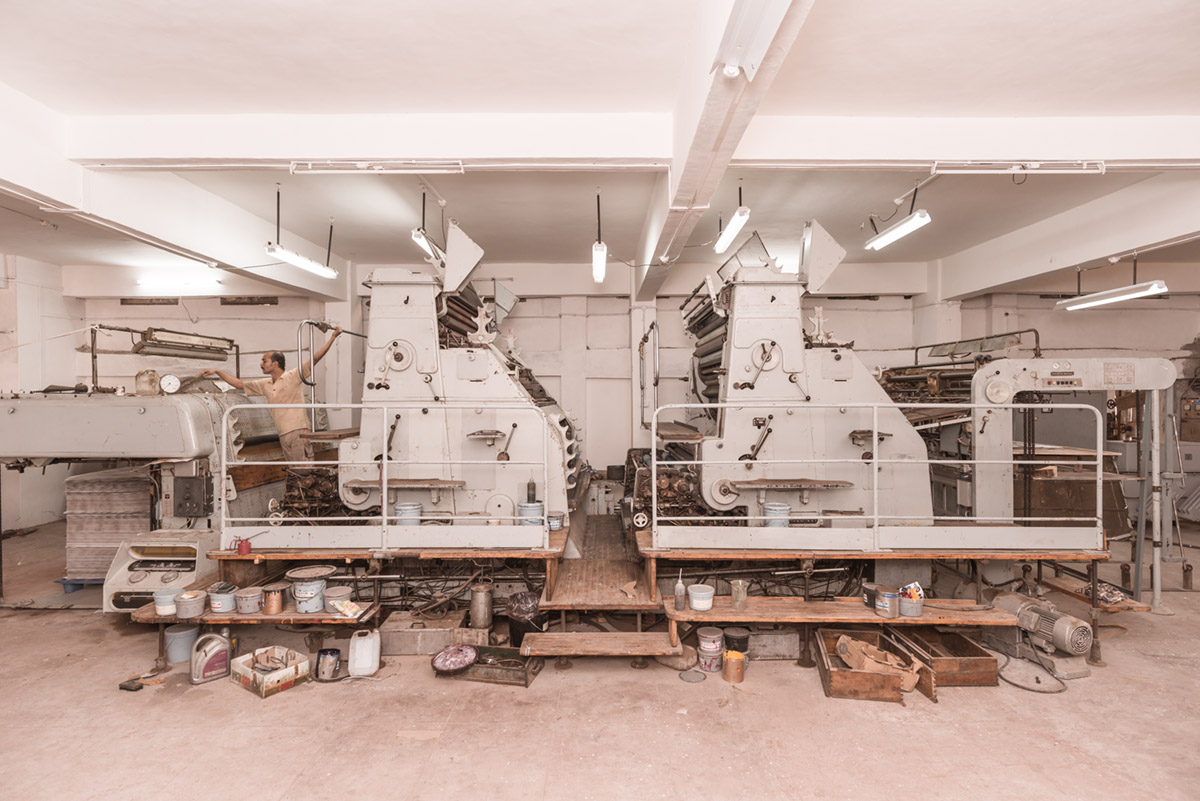
The 4-colour printing press Roland Ultra RVU 7 – serial number. 22334, series 414, weight 43,000 kilos – came to Italy form Germany in 1969. For over 30 years it worked for the well-known Milanese printing firm Grafiche Editoriali Ambrosiane (GEA), where it printed illustrated books, art books and encyclopaedias for publishers around the globe. In 2000, however, GEA closed its doors. The printed page was at the start of a transformative crisis that is still underway, rendering presses from Roland Ultra’s generation obsolete. Despite being designed and built to last, their printing times, production costs and maintenance requirements were no longer competitive.
Roland Ultra stayed put, becoming a pampered pensioner hosted by Assab One, a centre for contemporary art that had moved int GEA’s Milan premises in 2002. For 10 years it was present at (and sometimes involved in) the exhibitions, installations, performances and readings that took place at Assab One, acting as a part of the genius loci. In late 2011, a surprise visitor set the press’s destiny on different tracks. A former printer from India, the man came to Assab One asking expressly for Roland Ultra. Based in New York and now trading in printing presses, he wanted to buy Roland Ultra and take it to India, where costs and delivery times differ greatly from those in the West, allowing Roland Ultra to be considered the king of printing presses once more. The deal was finalised on the condition that the press be accompanied to its destination.
Il viaggio di Roland Ultra (“The Travels of Roland Ultra”) began with the desire to encounter new people and places, and experience a fresh start.
Roland Ultra RVU 7 – 4 colori, numero di matricola 22334, serie 414, peso 43.000 kg – arriva in Italia dalla Germania nel 1969 e, per più di 30 anni, risiede e lavora per una nota azienda grafica milanese, la GEA -Grafiche Editoriali Ambrosiane-, dove stampa libri illustrati, libri d’arte, enciclopedie per editori di tutto il mondo. Nel 2000, però, l’azienda si ferma. Il settore della carta stampata è all’inizio di una crisi e di una trasformazione che sono ancora in atto. Tutto ciò rende obsolete le macchine da stampa di quella generazione: nonostante fossero state progettate e costruite per durare nel tempo, non sono più competitive per tempi di produzione, costo del lavoro e necessità di manutenzione.
Roland Ultra resta al suo posto, ma diventa una pensionata di lusso ospitata da Assab One, Centro per l’arte contemporanea che, nel 2002, prende il posto della GEA. Per dieci anni assiste (e a volte partecipa) alle mostre, alle installazioni, alle performance, ai reading che si avvicendano al suo cospetto, diventando un vero e proprio genius loci. Alla fine del 2011, un evento inaspettato cambia la sua vita: un ex stampatore indiano, che vive a New York e commercia in macchine da stampa, si presenta a Milano, alla porta di Assab One, chiedendo espressamente di lei. Vuole acquistarla per portarla in India, dove costi e tempi ben diversi da quelli occidentali le permetteranno di essere ancora considerata la regina delle macchine da stampa. L’accordo si conclude solo a patto di poterla seguire fino a destinazione.
Il Viaggio di Roland Ultra comincia così, con la curiosità d’incontrare persone e paesaggi inaspettati e il desiderio di un nuovo inizio.
Gallery
Related Projects

In 2017 Giovanni Hänninen was called by Giovanna Calvenzi of Studio Basilico to continue Gabriele Basilico’s work on the three European cities with a circular structure: Moscow, Milan, Madrid.
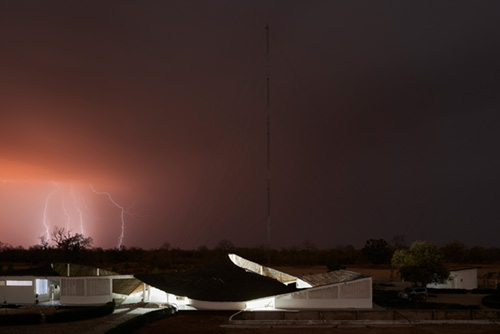
A documentation of the present situation and a first step in the study of how electric light could change the life of the village.

The beginning of a research that aims to create an atlas that uses photography as a tool for analysing the city’s dynamics.
Tomorrow is a consideration on the future of Man on this planet. A tapestry that depicts the remains of an extreme climate event, such as the ones we are getting accustomed to.

The AFTER/DOPO exhibition aims to investigate Val di Sella following the storm Vaia which destroyed the land in 2018.

Intersezioni / Confini is the first stage of a photographic campaign on the city of Dalmine that Fondazione Dalmine commissioned to an author who made of the representation of places and urban spaces one of his distinctive features.
Giovanni Hänninen, Via Santa Marta, 18, 20123, Milan, Italy, e-mail: studio@hanninen.it — all images © Giovanni Hänninen 2021